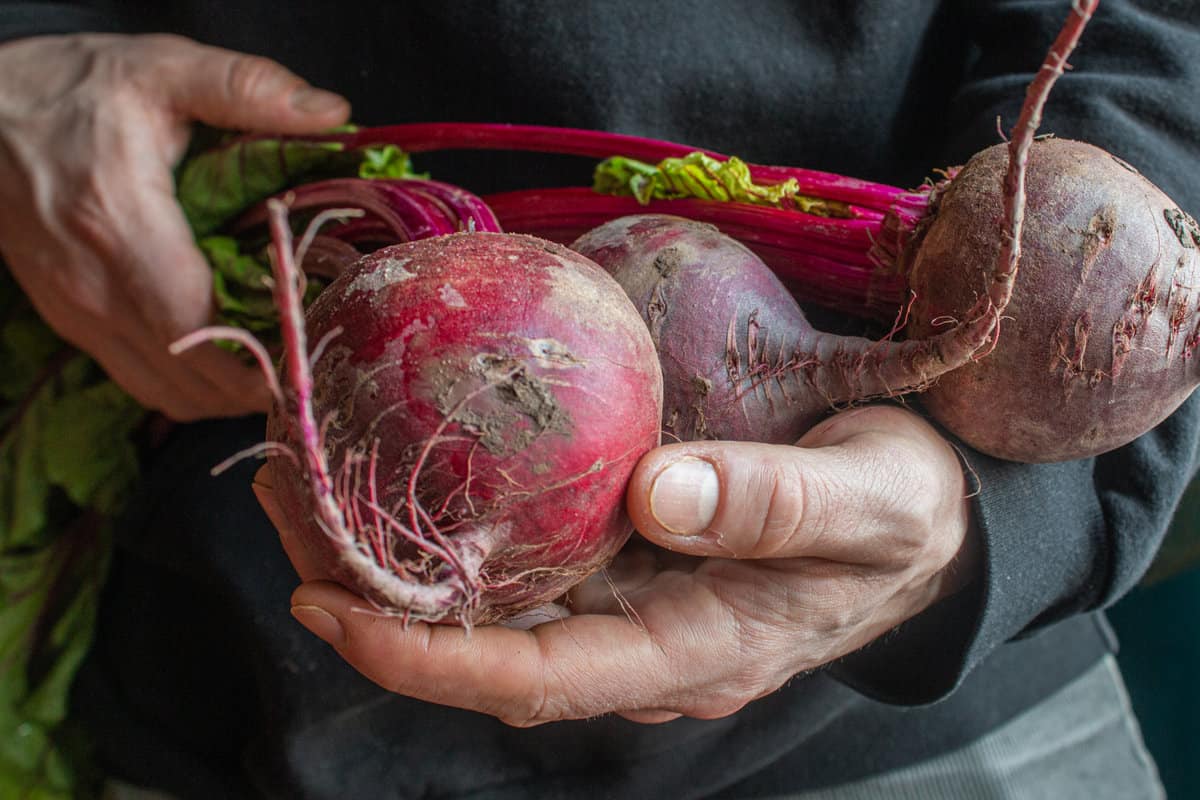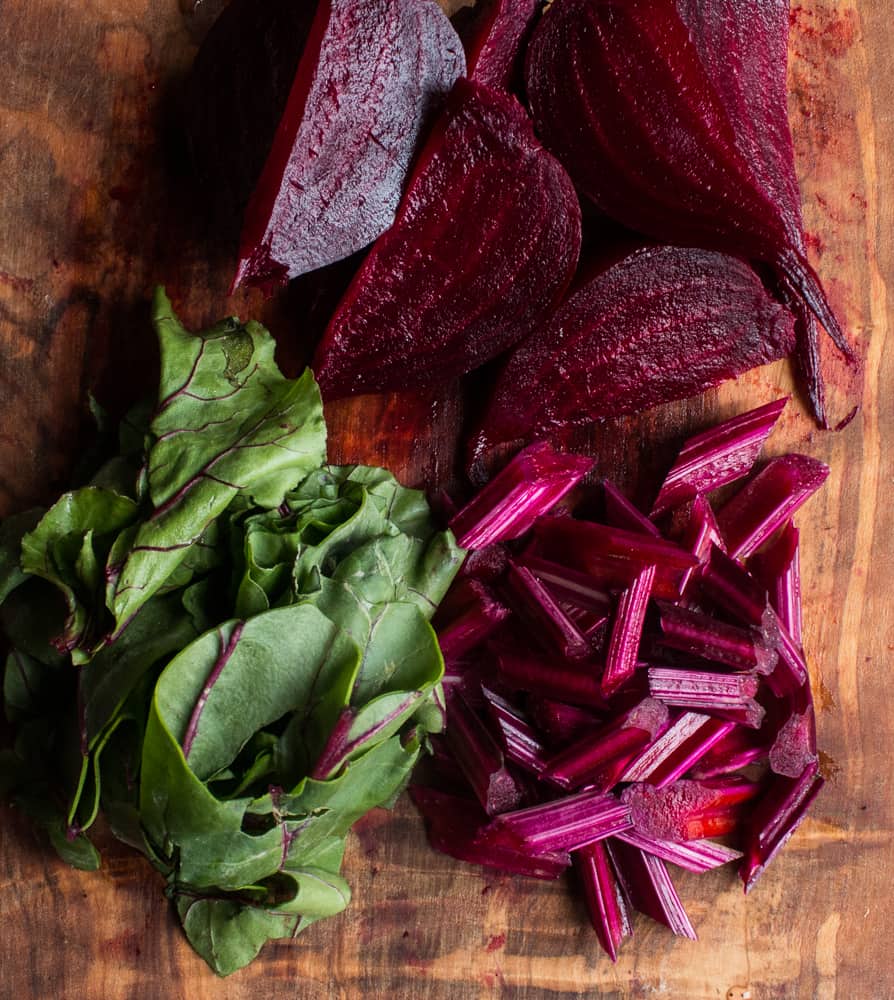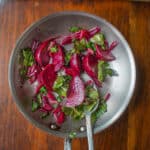We all know that beet roots are edible, but the stems and leaves are too. Once you try them all cooked together, fresh from the garden you may not make beets any other way.

A couple months ago when I was showing someone how to clean chard and I had a revelation. As I took the greens off of the large stems I started making a pile of stems. After we were done cleaning the bunch, my prep cook said:
"And the stems Jefe?"
I didn't know what to say for a moment, I realized I was about to instruct someone to throw away a large pile of something I knew was usable and for some reason, I hadn't thought critically about it before.
I would pickle chard stems here and there, and I knew they were ok peeled and cooked, but I felt like I had been mistreating the plant by not using the stems at the same time I serve the leaves. I felt secretly embarrassed and wasteful.

I took some of the stems and cut them into small pieces so that the fibers on the outside wouldn't stay chewy, and proceeded to sweat some in butter, then wilted the leaves with the stems and ate it. It was like eating an entirely new plant, I love wilted greens, but there's more textural stem proportionate to the leaf on chard, so it's like almost like eating a cross of spinach and soft celery when it's cooked.
I got some beautiful beets with the leaves attached one day after my chard phase. The beets reminded of how they're closely related to chard, and I knew I needed to start serving the whole beet with it's stems and leaves too. Here's the simplest way I know how to make them.
Roasted Beets with Their Leaves and Stems
Equipment
- Aluminum foil
- Cast iron skillet or roasting pan
Ingredients
- 2 large beets with stems and leaves attached
- Kosher salt and fresh ground black pepper to taste
- Dash of red wine vinegar
- 2 tablespoons unsalted butter
- a few sprigs of fresh thyme
Instructions
- Remove the stems and leaves from the beets, wash, dry, and reserve both separately.
- Wash and scrub the beet roots.
- Wrap each beet in foil with the thyme leaves, then put in a dish and bake at 325 until just tender when pierced, about 1 hour depending on your oven and the size of the beets. Cool the beets in an ice bath to make peeling easy (or just cool in your fridge), then cut each beet in half and cut into wedges.
- Cut the stems on the diagonal into ½ inch pieces. Cut or tear the leaves into roughly 2inch pieces.
- Bring a quart of salted water to a boil, add the beet stems and cook until just tender, then remove and cool.
- Heat the butter in a wide saute pan like a 10 inch, then add the beets and warm through on medium low heat, add the stems and leaves. Season to taste with salt and pepper, then cover the pan to wilt the greens with the steam quickly for a few minutes, until the leaves are tender and taste good to you.
- Remove the lid, toss or stir the beats, stems and leaves, and finish the dish with a shot of good quality red wine vinegar.
- Taste the mixture for seasoning and adjust as needed, then serve immediately.


Norma
The stems also make an excellent relish to use freshly made, or to can for winter - just use them in place of the cucumber or other vegetable in your favourite relish recipe. Alternatively, you can chop them into a fine dice and dehydrate them for soups throughout the year.
anneke
The stems of both sliced like this (or much smaller), and maybe steamed for a few seconds, also make a great addition to green salads for some color!! Or to add the same to an otherwise visually boring rice (or ??) dish.
Alan Bergo
Absolutely, that sounds great.
David
So ... I guess you should/ought to feel a little guilty -- but at least you recognize it as opposed to proselytising happily and virtuously away. Anyone whose ever experienced hunger knows what you've drscribed and says YES to chard stems. Good on ya, Chef!
Alan Bergo
Yes sir. Honesty is the best policy, and learning never stops.